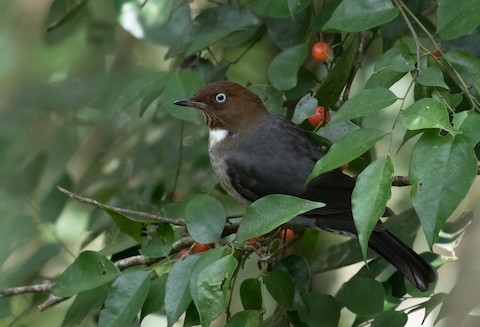Birdfinding.info ⇒ Common and widespread in humid forests, it can usually be found along Ecclesdown Road, as well as Hardwar Gap and other Blue Mountain sites. Other reliable sites include Marshall’s Pen and San San. Habitually shy and retiring, it tends to remain in the forest interior and is most likely to feed in the open at dawn and dusk, but it sometimes appears in full view at any time of day.
White-eyed Thrush
Turdus jamaicensis
Endemic to Jamaica, where it is a common resident of humid montane and foothill woodlands the length of the island.
Identification
Distinctive: warm-brown head with a prominent pearly white eye, white partial collar, slaty upperparts, and pale-gray underparts.
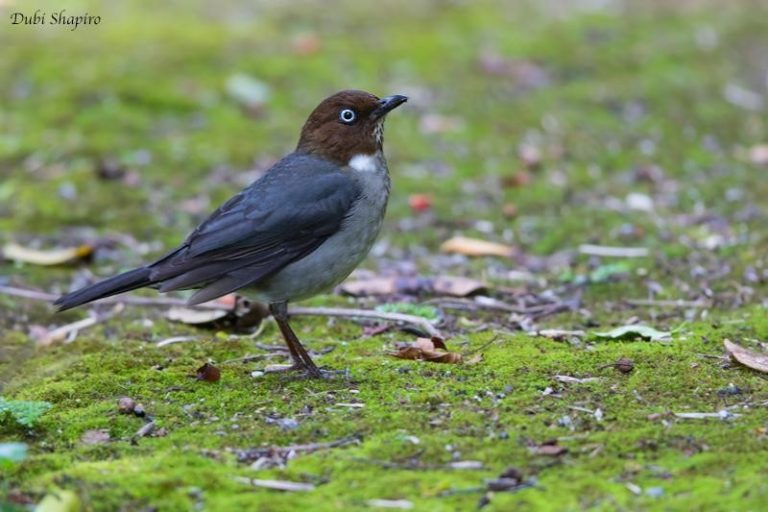
White-eyed Thrush. (Blue Mountains, Jamaica; March 1, 2018.) © Dubi Shapiro
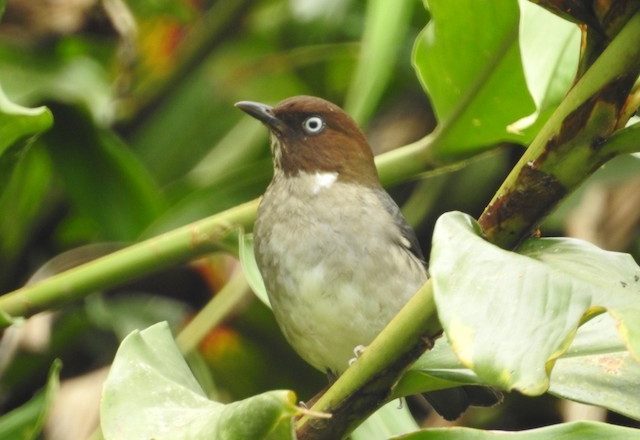
White-eyed Thrush. (Hardwar Gap, Jamaica; December 6, 2017.) © Luis Gles
The white eye is very striking and appears artificial—earning it the local nickname Glass Eye. Reportedly, some individuals (perhaps subadults) have dark eyes. Even so, the contrast between the brown head and the gray body and wings create a distinctive pattern that is strikingly different from Jamaica’s other resident Turdus, the White-chinned Thrush, and from any other thrush in the West Indies.
Voice. Song is mockingbird-like: a lively and varied series of loud, crisp phrases delivered in quick succession, where each phrase is a note repeated rapidly two to four times before moving to the next. Sometimes intersperses reverberations and chatter: Marshall’s Pen, Jamaica; March 30, 1992. © Robert L. Sutton; Hardwar Gap, Jamaica; July 13, 2022. © John Koon
Typical call is a pair of whistles, the first slightly lower than the second, often given in extended series, creating an alternating, see-saw effect: Marshall’s Pen, Jamaica; May 3, 1992. © Robert L. Sutton
Also gives various harsh and high-pitched call notes.
Notes
Monotypic species.
More Images of the White-eyed Thrush
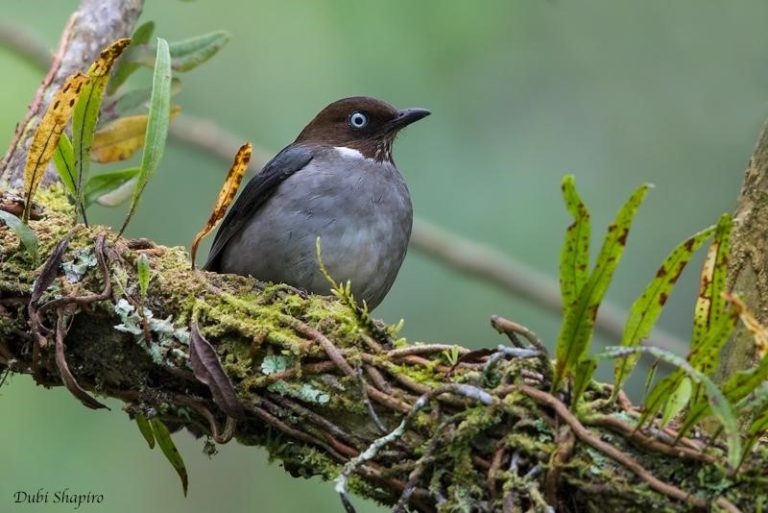
White-eyed Thrush. (Blue Mountains, Jamaica; February 27, 2018.) © Dubi Shapiro

White-eyed Thrush. (Blue Mountains, Jamaica; March 1, 2018.) © Dubi Shapiro
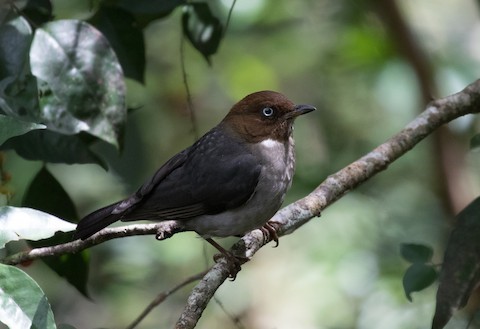
White-eyed Thrush. (Hardwar Gap, Jamaica; January 8, 2021.) © Simon Best
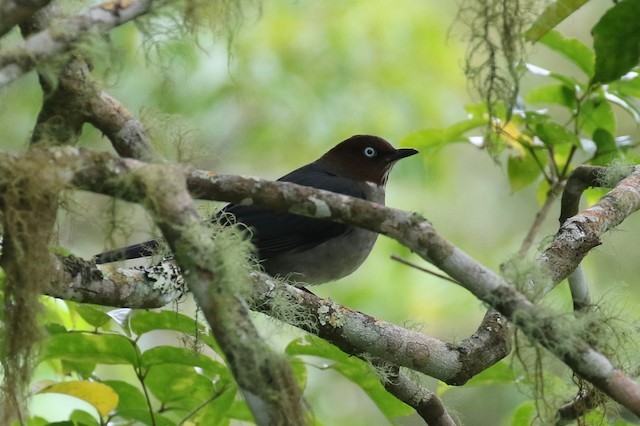
White-eyed Thrush, as it is often seen, with its white eye staring back from the shadows. (Hardwar Gap, Jamaica; January 29, 2019.) © Matthew Grube
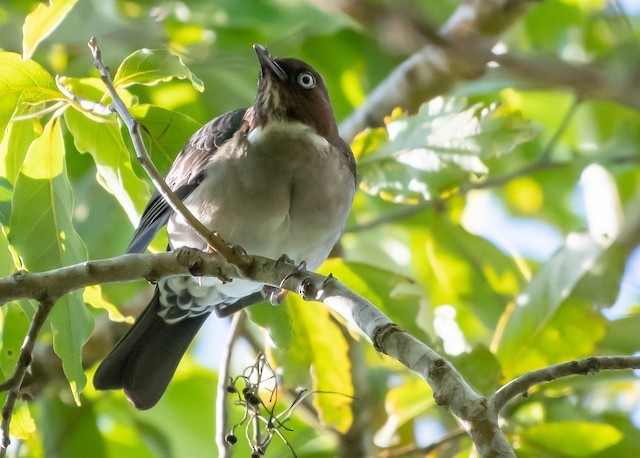
White-eyed Thrush. (Hardwar Gap, Jamaica; February 15, 2019.) © Lizabeth Southworth
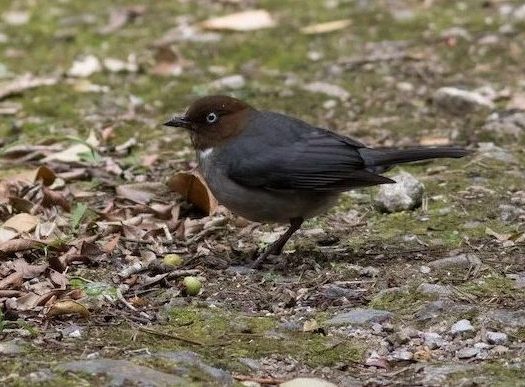
White-eyed Thrush. (Hardwar Gap, Jamaica; March 6, 2018.) © Tom Johnson
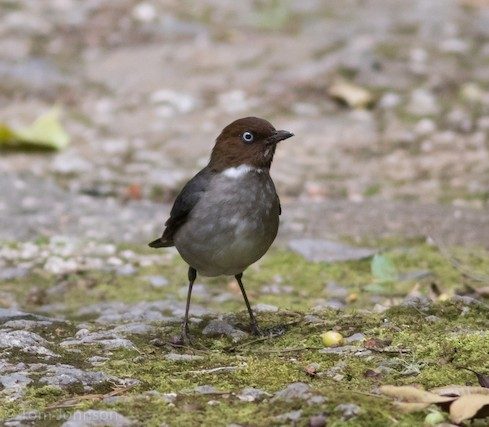
White-eyed Thrush. (Hardwar Gap, Jamaica; March 6, 2018.) © Tom Johnson

White-eyed Thrush. (Blue Mountains, Jamaica; February 27, 2018.) © Glenn Bartley
References
eBird. 2022. eBird: An online database of bird distribution and abundance. Cornell Lab of Ornithology, Ithaca, N.Y. http://www.ebird.org. (Accessed September 1, 2022.)
Haynes-Sutton, A., A. Downer, R. Sutton, and Y.-J. Rey-Millet. 2009. A Photographic Guide to the Birds of Jamaica. Princeton University Press, Princeton, N.J.
Kirwan, G.M., A. Levesque, M. Oberle, and C.J. Sharpe. 2019. Birds of the West Indies. Lynx Edicions, Barcelona.
Raffaele, H., J. Wiley, O. Garrido, A. Keith, and J. Raffaele. 1998. A Guide to the Birds of the West Indies. Princeton University Press, Princeton, N.J.
